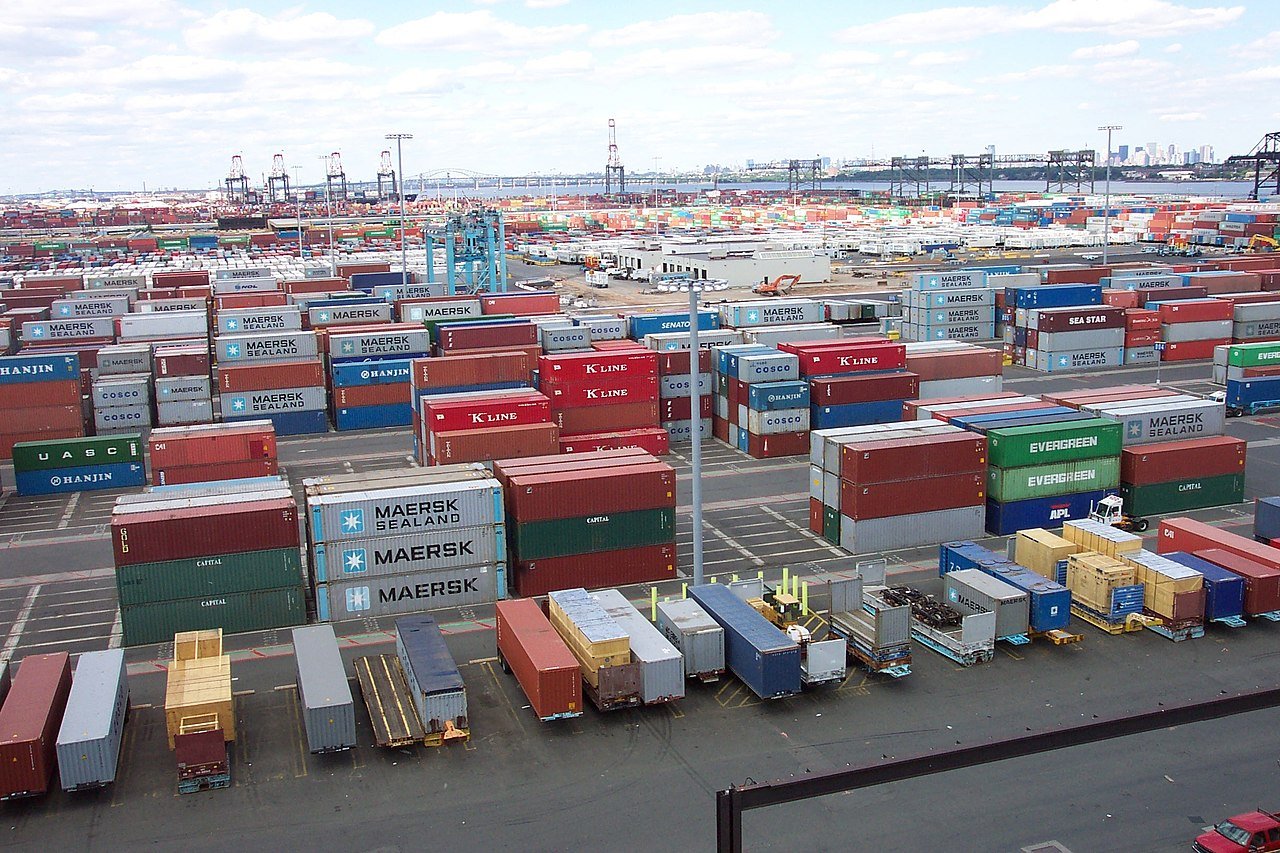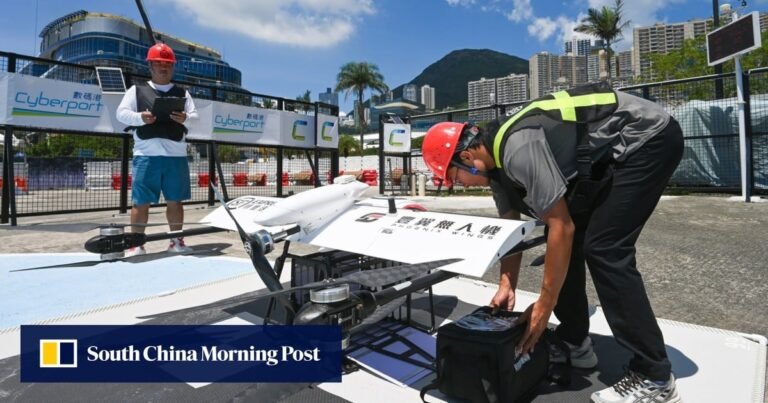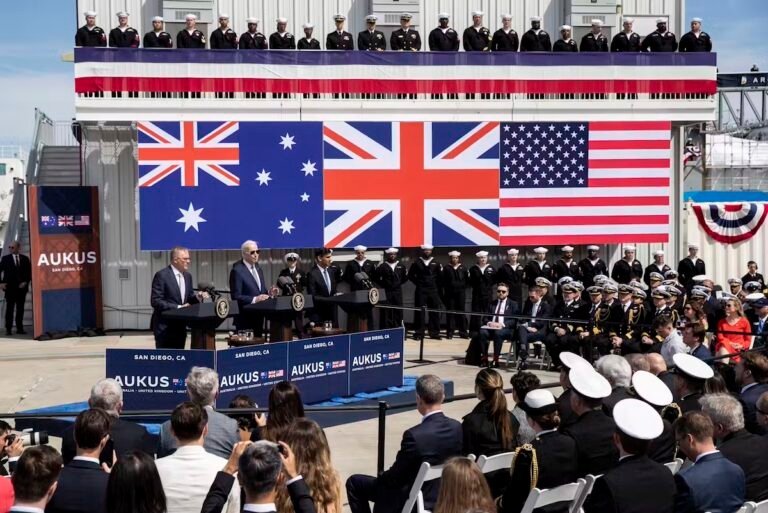China, US clash in global shipping after chip and tariff wars
China has unveiled retaliatory measures against the United States’ newly imposed port fees, signaling rising tensions between the two sides ahead of their top leaders’ potential face-to-face meeting in Seoul later this month. The Chinese Commerce Ministry said on Tuesday it started levying a special port-entry charge of 400 yuan ($56) per net ton on…
China has unveiled retaliatory measures against the United States’ newly imposed port fees, signaling rising tensions between the two sides ahead of their top leaders’ potential face-to-face meeting in Seoul later this month.
The Chinese Commerce Ministry said on Tuesday it started levying a special port-entry charge of 400 yuan ($56) per net ton on US-linked container ships. It stated that the opening rate will increase annually until it reaches 1,120 yuan by April 17, 2028.
It also sanctioned five US-related subsidiaries of South Korea’s Hanwha Ocean, including Hanwha Shipping LLC, Hanwha Philly Shipyard Inc., Hanwha Ocean USA International LLC, Hanwha Shipping Holdings LLC, and HS USA Holdings Corp.
It accused the entities of assisting US Trade Representative investigations involving China’s maritime and shipbuilding sectors,thereby hurting China’s sovereignty and development interests. The sanctions prohibit Chinese organizations and individuals from conducting transactions or cooperating with the listed firms.
“We will fight if we must fight. Our doors are open if the US wants to talk,” an unnamed spokesperson of the Chinese Commerce Ministry said in a statement on Tuesday.
“The two countries share extensive common interests and vast cooperation potential. Cooperation benefits both, while confrontation harms both,” he said. “The past four rounds of economic and trade consultations have proven that China and the US can resolve issues through mutual respect and equal consultation.”
The spokesperson stressed that “it is not the right way to engage with China when the US seeks negotiations with China while threatening and intimidating to come up with new restrictions.”
“China urges the US to correct its wrongdoings, show sincerity for talks, and meet China halfway – guided by the important consensuses reached by the two heads of states during their phone call to safeguard the hard-won outcomes of consultations,” he said.
Thespokesperson stated that China had already briefed the US through the bilateral export control dialogue mechanism before announcing its new export control measures on rare earths.
“In contrast, the US has long overstretched the concept of national security, abused export controls, and imposed discriminatory measures against China. Since the China-US economic and trade talks in Madrid, the U.S. has continuously introduced new restrictions against China, severely harming China’s interests and undermining the atmosphere of bilateral economic consultations. China firmly opposes this.”
The US Commerce Department added 32 firms, including 23 Chinese entities, to its Entity List on September 12, citing national security reasons. It accused them of acquiring or attempting to acquire US-originitems to support China’s military modernization.
On September 13, the Chinese Commerce Ministry announced that it would initiate a full investigation into a complaint that American chipmakers are allegedly dumping products on the Chinese market. Separately,the State Administration for Market Regulation (SAMR) launched a further probe intoNvidia’s alleged antitrust behavior.
New battleground
Political tensions between China and the US have recently increased afterChina tightened its export controls on rare earths and related processing technologies on October 9. This promptedUS President Donald Trump to call for an additional 100% tariff on Chinese goods imported into the US from November 1.
Trump had once said he might not hold a meeting with Chinese President Xi Jinping during the APEC Summit in South Korea later this month. However, US Commerce Secretary Scott Bessent said Monday that he still expects to see the Xi-Trump meeting.
Meanwhile, the fight between the US and China has extended to the shipbuilding sector.
In April of this year, the US Trade Representative (USTR), citing the results of its Section 301 investigation, accused Chinese shipbuilders and operators of using unfair practices to gain global market shares. It said it would, from October 14, impose:
- a fee of$50 per net tonon any Chinese-owned or operated ship entering a US port (this rate will rise each year, reaching $140 per net ton by April 2028);
- a fee of $18 per net ton or $120 per container on any Chinese-built and foreign-owned ship entering a US port (this rate will rise each year, reaching $140 per net ton or $250 per containerby April 2028);empty ships, certain US-owned ships, ships entering the continental US from a voyage of less than 2,000 nautical miles, and certain specialised ships can be exempted;
- a fee of $14 per net ton or $150 per Car Equivalent Unit (CEU) on any non-US-built vehicle carrier entering a US port (one CEU equals roughly the space of a standard passenger car).
The USTR stated that the fee would be charged per rotation or string of US port calls, and no more than five times a year per individual vessel.
On October 10,the USTR revised the basis for calculating service fees on operators of non-US-built vehicle carriers, setting the cost at $46 per net ton.
The proposed fees took effect on Tuesday. It means thata Chinese bulk carrier with 50,000 net tonswould face$2.5 million in fees for a single port call, while a large vessel could be charged up to$8.5 million each time it docks in the US.
“The Section 301 shipping fee policy is a blow to the very foundation of China’s global commerce and strikes at the country’s core interests,”a Hubei-based columnist using the pseudonym “Laoheikan” writes in an article published on October 7.“The policy’s impact is not limited to China, but all countries.”
“Following the decline of US manufacturing, both the port infrastructure and shipbuilding industries have also fallen into stagnation,” he says. “Now Trump wants to revive them as part of his Make America Great Again (MAGA) movement. But he won’t succeed and he will cause disruption.”
“Given that the USisdeclining, it is almost impossible for Washington to achieve a global blockade of Chinese trade and shipping,” he says. “As long as China dares to fight, it will be able to defeat America’s plan.”
He says shipbuilding and maritime trade could become Washington’s new battleground and strategic front in its rivalry with Beijing.
Beijing’s ‘killer move’
On October 10, China’s Ministry of Transport said it wouldstart levying a special port-entry charge of 400 yuan per net ton on US-linked container ships, which are defined as:
- ships owned or operated by US enterprises, organizations or individuals;
- ships owned or operated by enterprises or organizations in which US enterprises, organizations, or individuals directly or indirectly hold 25% or more equity (including voting rights or board seats);
- ships flying the US flag;
- ships built in the US.
It added that if these ships were built in China or are empty, their operators can be exempted from the new fees.
A Guangdong-based columnist surnamed Chen suggests that a large US container ship may be required to pay $5.5 million to $15 million each time it docks at a Chinese port.
“The clause covering vessels with 25% or more US ownership is the real ‘killer move.’ It widens the impact to a global scale,” he says. “To avoid penalties, some firms may turn to offshore entities, change flags, or use second-hand ships to ‘cleanse’ their US ties. This will drive up logistic costs and reduce trade efficiency.”
Read: China tightens rules to block Pakistan rare earths exports to US
Follow Jeff Pao on Twitter at@jeffpao3







